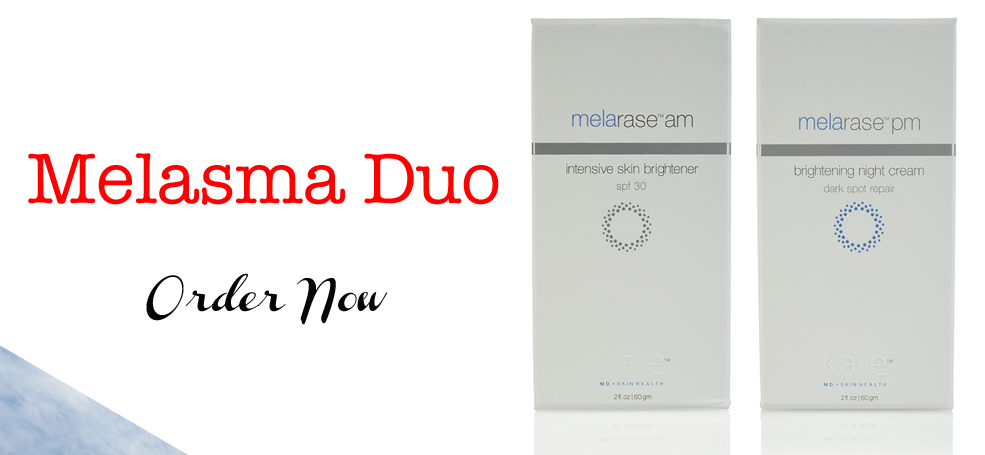One of the most common problems with premature aging in women is the development of dark spots, age spots, and facial discoloration. Skin complexion is an important part of youth, and the development of facial discoloration can add years to your face and skin. Most cases of facial discoloration occur as a result of genetic influences, sun exposure, chronic inflammation, trauma, and hormones. The spots can occur as small freckles on the face or as large blotches on the upper lip, cheeks, and forehead. If the facial discoloration follows certain patterns of growth, the pigmentation problem is referred to as melasma.

Melarase creams can help reduce pigmentation and dark discoloration on the skin. Use Melarase twice a day. Instructions for use include Melarase AM in the morning and Melarase PM in the evening.
Treating melasma and facial pigmentation begins first with an understanding of the mechanisms of pigmentary development. Skin pigment is produced by microscopic cells known as melanoctyes. These cells produce melanin and the melanin slowly works its way from the epidermis to the topmost layers of the skin. This process responds to basal stimuli as well as sun exposure, hormones, and trauma. If the skin is exposed to UV rays, injury, or the hormones estrogen and progesterone, pigment production is stimulated, ultimately causing dark spots to appear.
Melarase creams work to combat the overproduction of melanin in the skin. If the pigment is primarily located within the epidermis, the lightening process is relatively quick, but if the melanin is located in the deeper dermis, it may be more difficult to lighten the skin. Melarase works by controlling the cellular overproduction of melanin, thus evening out the skin and lightening dark areas. Melarase AM and Melarase PM work in concert to tackle abnormal skin cells that produce excess melanin and darken the skin.